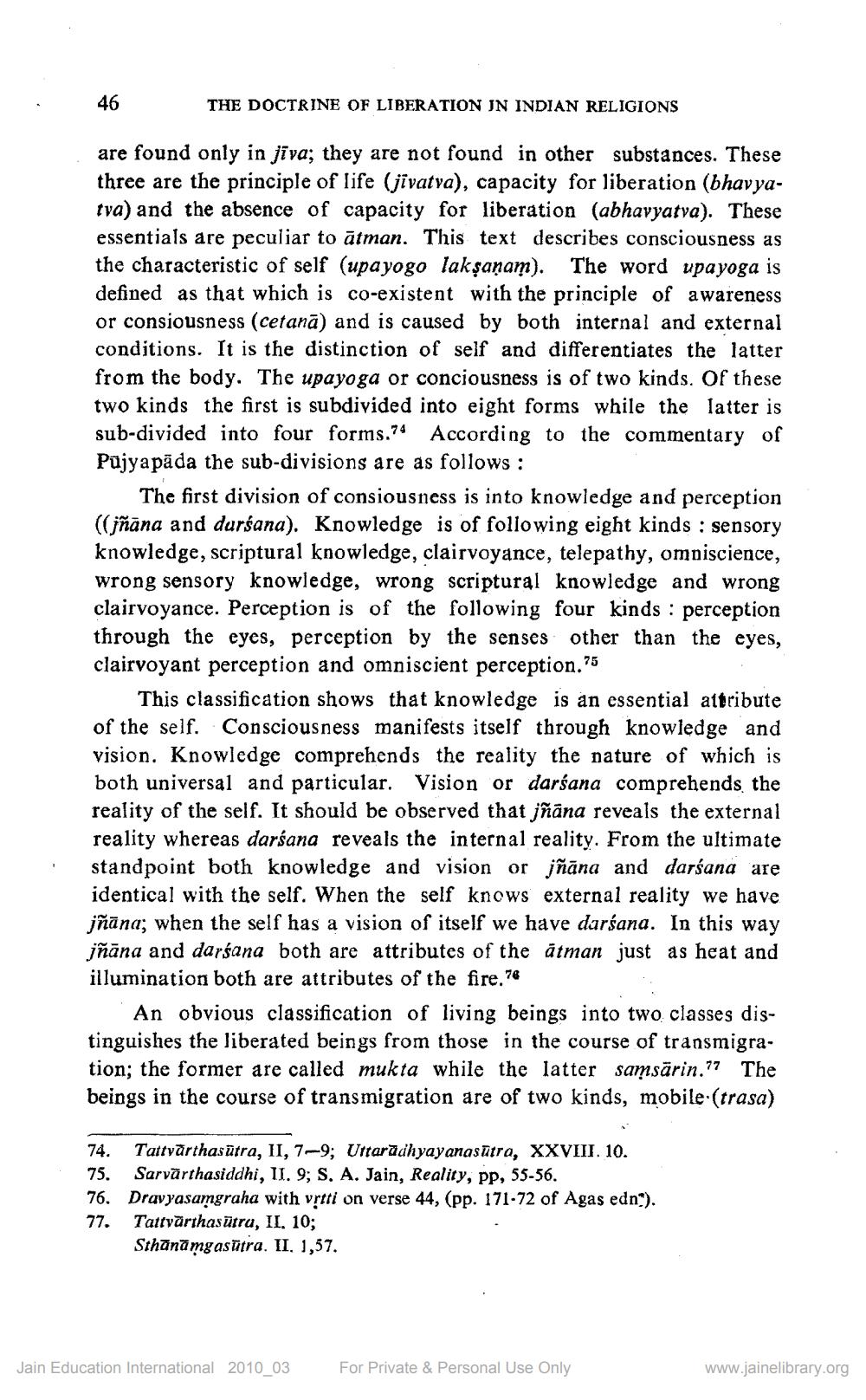________________
46
THE DOCTRINE OF LIBERATION IN INDIAN RELIGIONS
are found only in jiva; they are not found in other substances. These three are the principle of life (jivatva), capacity for liberation (bhavyatva) and the absence of capacity for liberation (abhavyatva). These essentials are peculiar to ātman. This text describes consciousness as the characteristic of self (upayogo lakşanam). The word upayoga is defined as that which is co-existent with the principle of awareness or consiousness (cetanā) and is caused by both internal and external conditions. It is the distinction of self and differentiates the latter from the body. The upayoga or conciousness is of two kinds. Of these two kinds the first is subdivided into eight forms while the latter is sub-divided into four forms.74 According to the commentary of Pujya pada the sub-divisions are as follows:
The first division of consiousness is into knowledge and perception ((jñāna and darśana). Knowledge is of following eight kinds : sensory knowledge, scriptural knowledge, clairvoyance, telepathy, omniscience, wrong sensory knowledge, wrong scriptural knowledge and wrong clairvoyance. Perception is of the following four kinds : perception through the eyes, perception by the senses other than the eyes, clairvoyant perception and omniscient perception.25
This classification shows that knowledge is an essential attribute of the self. Consciousness manifests itself through knowledge and vision. Knowledge comprehends the reality the nature of which is both universal and particular. Vision or darśana comprehends the reality of the self. It should be observed that jñāna reveals the external reality whereas darśana reveals the internal reality. From the ultimate standpoint both knowledge and vision or jñāna and darśana are identical with the self. When the self knows external reality we have jñāna; when the self has a vision of itself we have darśana. In this way jñāna and darśana both are attributes of the ātman just as heat and illumination both are attributes of the fire.76
An obvious classification of living beings into two classes distinguishes the liberated beings from those in the course of transmigration; the former are called mukta while the latter samsärin. The beings in the course of transmigration are of two kinds, mobile (trasa)
74. Tattvärthasūtra, II, 7-9; Uttaradhyayanasūtra, XXVIII. 10. 75. Sarvärthasiddhi, II. 9; S. A. Jain, Reality, pp, 55-56. 76. Dravyasamgraha with vrtti on verse 44, (pp. 171.72 of Agas edna). 77. Tattvārthasūtru, II, 10;
Sthānāmgasūtra. II, 1,57.
Jain Education International 2010_03
For Private & Personal Use Only
www.jainelibrary.org




